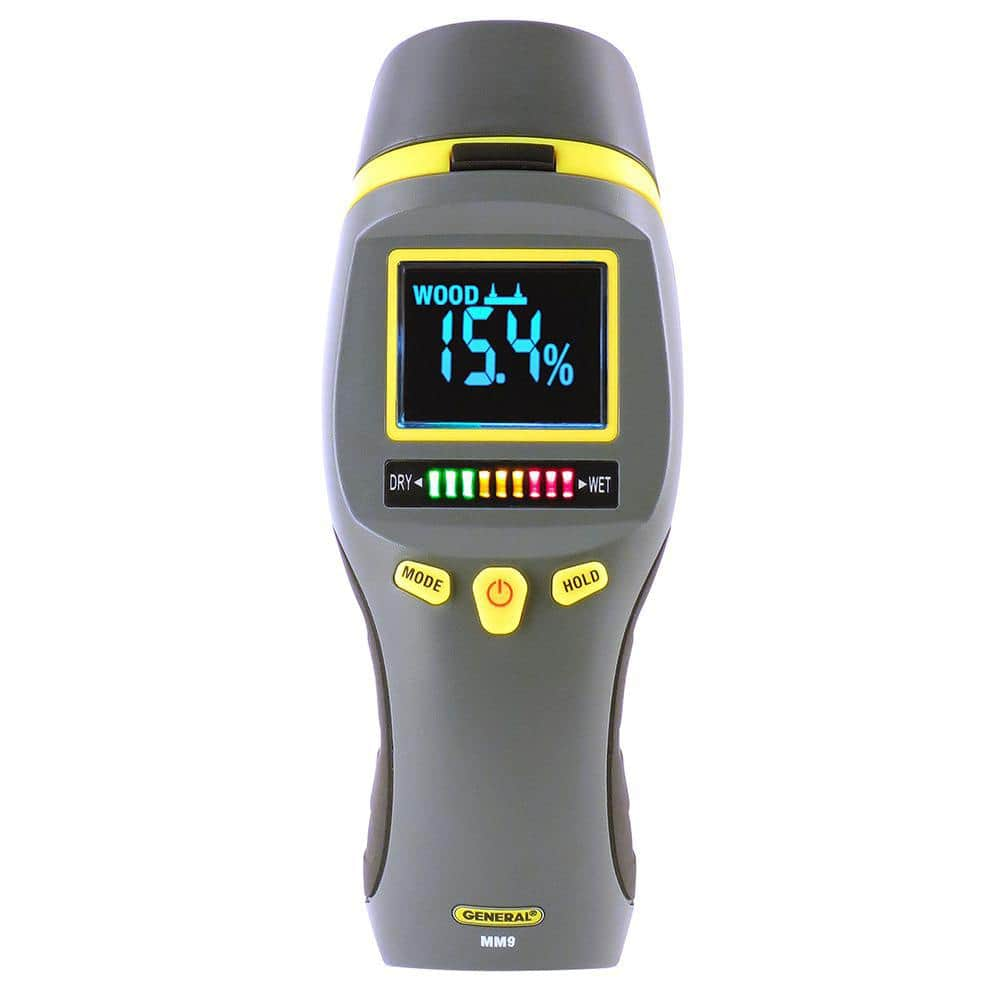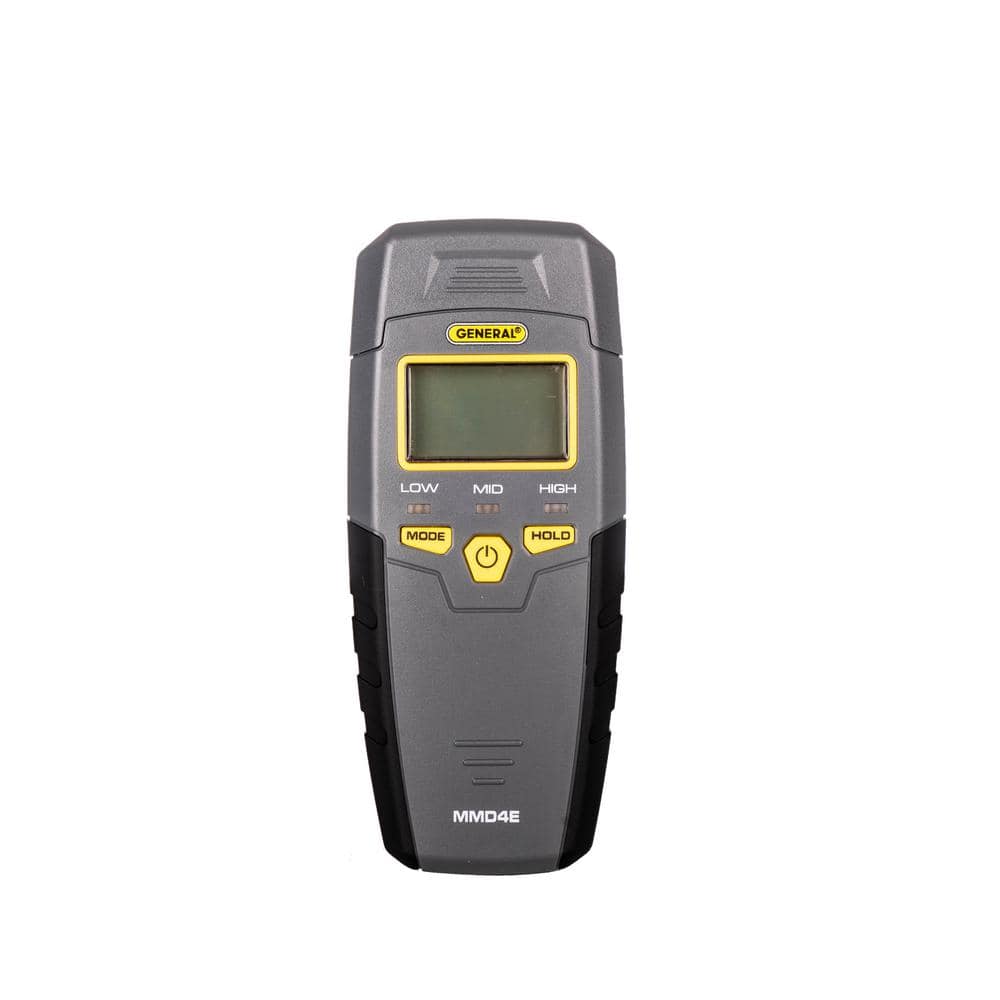The Science Behind Moisture Meters: Exactly How They Function and Why They're Vital
Delve Into the World of Moisture Meters: Everything You Required to Know
In the world of moisture meters exists a globe of accuracy and functionality that usually goes undetected. These gadgets, while seemingly uncomplicated, hold a wealth of details that can significantly affect numerous industries and applications. Understanding how moisture meters run, the various types offered, and their varied uses can shed light on their value in guaranteeing quality and efficiency. By exploring the ins and outs of moisture meters, one can uncover an important tool that goes beyond mere measurement, supplying insights that can make a considerable distinction in numerous fields.
How Moisture Meters Job
Wetness meters operate by measuring the electric conductivity or capacitance of materials to figure out the moisture material present - Moisture Meter. These meters are vital devices across various sectors, consisting of farming, construction, and woodworking. By using different techniques such as pinless or pin-type innovation, dampness meters offer precise analyses that help specialists make educated decisions
Pin-type dampness meters work by putting the sharp pins right into the material being examined. The electric conductivity in between the pins is then gauged, with greater dampness degrees resulting in raised conductivity. On the various other hand, pinless dampness meters use electro-magnetic signals to scan a bigger location without triggering any type of damages to the material's surface. These meters are ideal for quickly assessing dampness levels in large areas or finished products.
Despite the approach made use of, wetness meters play a critical role in avoiding concerns such as mold development, structural damage, or product problems triggered by excess dampness. Understanding exactly how these meters work is essential for ensuring the high quality and stability of products in numerous applications.
Sorts Of Wetness Meters
Provided the important role dampness meters play in numerous industries, it is important to comprehend the various kinds available to experts for precisely analyzing dampness levels. There are mainly two major kinds of dampness meters: pin-type and pinless dampness meters.
Pin-type moisture meters use two pins that are placed into the material being evaluated to measure the electric resistance in between them. This approach is generally utilized for timber, drywall, and other building materials. Pin-type meters provide specific readings at details depths, making them excellent for determining moisture gradients.
On the other hand, pinless dampness meters utilize electromagnetic sensing unit plates to check a bigger location of the material without creating any damages. This type is ideal for swiftly scanning large locations and is frequently utilized for floor covering, walls, and ceilings. Pinless meters are hassle-free for taking readings on completed surfaces without leaving any visible marks.
Both kinds of moisture meters have their advantages and are chosen based upon the specific requirements of the work handy. Recognizing the differences between these kinds is critical for experts to make accurate moisture assessments.
Applications Across Industries
Construction professionals depend on wetness meters to assess the dampness degrees in structure products wikipedia reference like concrete, drywall, and timber, which is vital for preserving architectural stability and avoiding concerns like rot or mold and mildew. The floor covering sector uses moisture meters to gauge the moisture web content in subfloors prior to installing numerous flooring treatments, stopping expensive damages due to excess dampness. In the food industry, moisture meters are made use of to check and manage moisture degrees in products such as grains, nuts, and dried fruits to maintain freshness and quality.
Tips for Using Moisture Meters
When measuring the moisture content in various products,Use the wetness meter's calibration settings to ensure precise analyses. Calibration is essential for the correct performance of a wetness meter. Prior to each usage, it is advisable to examine and readjust the calibration settings according to the particular product being examined. Furthermore, see to it the meter is readied to the proper dampness range for go to my site the material you are measuring to get the most exact results.

When utilizing a pin-type wetness meter, place the pins to the suitable depth recommended for the material being evaluated. This guarantees that the wetness analyses are extracted from the proper deepness within the product, supplying an extra precise depiction of its dampness content. For pinless dampness meters, keep in mind to keep correct call with the material's surface to get dependable readings.

Routinely examine and replace the batteries in your dampness meter to avoid unreliable readings due to reduced power. Shop the meter in a completely dry and safe area when not being used to prolong its life-span and keep its accuracy. By complying with these ideas, you can make the most of the efficiency of your moisture meter and obtain accurate wetness content dimensions across different materials.

Maintenance and Calibration
To make certain the precision of dampness web content dimensions, regular maintenance and calibration of the wetness meter are necessary action in its proper performance. Maintenance involves keeping the wetness meter cost-free and clean from debris that might influence its readings. It is necessary to adhere to the maker's guidelines for cleaning to avoid damages to the gadget. In addition, regular calibration is essential to validate the precision of the readings. Calibration adjusts the moisture meter to make sure that it gives reputable and regular results.
Calibration needs to be done occasionally, particularly if the wetness meter is used often or in crucial applications where specific measurements are needed. By preserving and calibrating the dampness meter routinely, users can trust the precision of the moisture material dimensions acquired.
Verdict
To conclude, dampness meters play an essential function in different sectors by properly gauging the moisture web content of materials. Understanding exactly how these tools function, the various types offered, and proper upkeep and calibration are important for acquiring dependable outcomes. Whether in production, agriculture, or building, making use of moisture meters Website aids guarantee top quality control and performance in processes.
Building and construction professionals count on wetness meters to assess the dampness levels in structure products like concrete, drywall, and wood, which is critical for keeping structural honesty and preventing problems like rot or mold and mildew. The floor covering industry makes use of moisture meters to determine the moisture web content in subfloors prior to setting up different floor coverings, preventing expensive problems due to excess wetness.Use the dampness meter's calibration settings to guarantee precise readings when gauging the dampness content in various materials. By adhering to these suggestions, you can optimize the performance of your dampness meter and acquire precise moisture material dimensions across different materials.
In conclusion, dampness meters play a vital role in various industries by precisely determining the moisture material of materials.